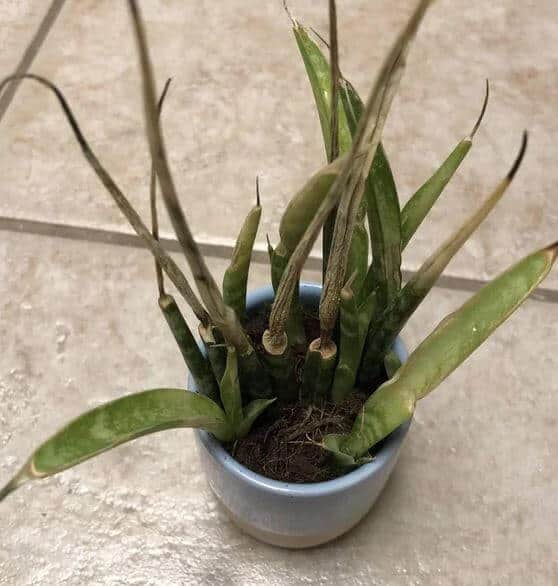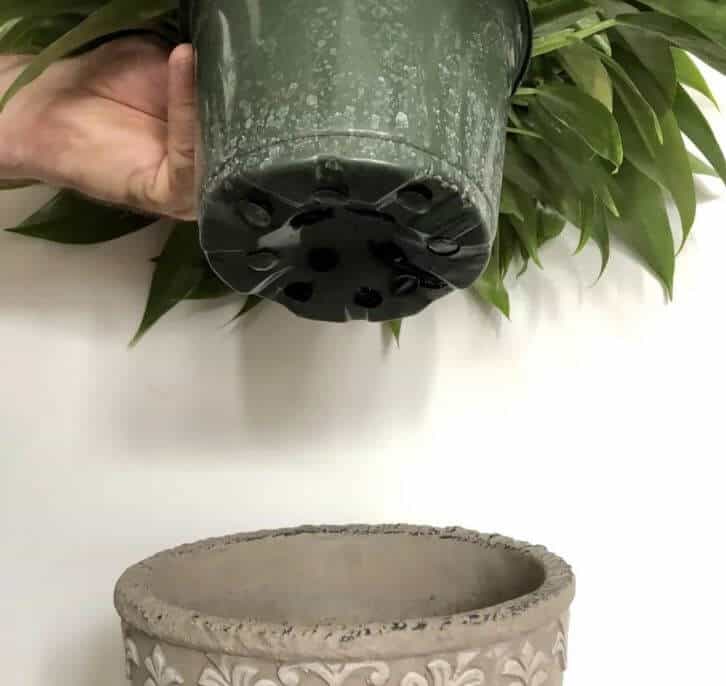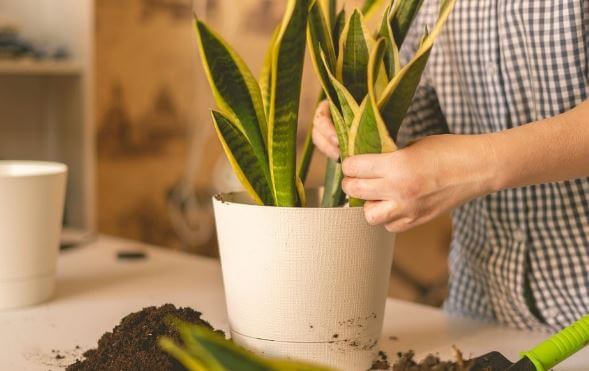Last Updated on August 31, 2023 by a Friendly Gardener
Do snake plants need drainage holes? Snake plants are known to be hardy and are popular because they can tolerate a variety of environmental conditions and a certain amount of neglect. But what about pots without drainage holes, can these plants survive in one?
Snake plants, like all houseplants can benefit from cultivation in pots with drainage holes because these aid in removing excess water. Running water until it exits drainage holes can be very useful in contrasting salt buildup in soil beds and in avoiding fertilizer burn of root systems. If you have a tendency to overwater, drainage holes aid in preventing root rot. Pots without holes are lovely when used decoratively as cache pots.
What Happens If My Snake Plant’s Pot Doesn’t Have Drainage Holes?

Snake plants are incredibly popular for their sculptural appearance and easy care. They also do not require much water. Still, they do need drainage holes or at least can benefit from having them. Because this plant is considered indestructible, does not mean it’s true. There are two threats to the Snake plant’s survival: freezing temperatures and overwatering.
A Cold Environment
Freezing temperatures can be deadly for the Snake plant as it is a tropical plant. When temps drop below 50°F., it is probable that the plant will suffer damage. Foliage may develop brown tips and spots, turn black, split, wither, stop growing, and eventually die.
Overwatering

Overwatering can cause root rot. As tropical plants, snake plants are also drought-tolerant succulents. They do not require much water to survive because the thick foliage stores moisture within as does the root system. Even if you forget to water for a month, your Snake plant will survive. If, on the other hand, you overwater your plant, it can be fatal.
This is the principal reason a container should have drainage holes. If the pot does not have holes, water can collect and stagnate in the bottom of the pot. If water collects in the bottom of the container, the bottom layer of the soil will become waterlogged, causing the root system to rot. Roots will not be able to breathe because soggy soil cannot be properly aerated. A dying root system will cause the plant to collapse and die.
Wet soil also renders a snake plant more susceptible to infection, disease, and pest infestations. Wet soil can become a breeding ground for some types of insects as well as bacteria, and fungi. Once these have increased in number, they will feed on nutrients contained in the soil bed and on the plant’s roots, eventually attacking the plant itself.
Salt and Mineral Buildup

If you use municipal tap water on your snake plant, it will inevitably contain minerals and chemicals. Fertilizers used for a nutrient boost also contain quite a bit of salt. Both salts and minerals tend to build up in the soil bed and they will damage the roots. Foliage may turn yellow or brown and crispy. To protect your plant, snake plant drainage is essential. The soil bed should be flushed out regularly under running water. This is only possible if the plant container has drainage holes.
How Can I Improve the Drainage of My Snake Plant?

Aside from drainage holes, there are a few things you can do to protect your snake plant and the correct drainage. You can use specifically formulated potting mixes for succulents and cacti. These blends generally contain greater amounts of materials that ensure root aeration and water drainage such as gravel, perlite, coarse sand, and vermiculite. These materials create air pockets in the soil mix so that water passes through easily. You can also blend your own growing medium using five parts soil, four parts perlite or similar, and one part compost.
Another aid is a container made of clay or terracotta because these are porous. Excess water and moisture seep through these materials and cause the soil bed to dry out more rapidly. The containers selected should be wide enough to guarantee a good base that impedes taller snake plants from toppling over. A wider pot will also provide more space for offshoots and plantlets to form for propagation.
Snake plants can benefit from repotting every two to three years during the spring. If left unpotted, snake plants can cause containers to break. Still, the most important factor is overwatering. With a snake plant, it’s better to underwater. As a plant that has a certain resistance to drought, when you do water, your snake plant will revive quickly. With overwatering the risks are higher and the solutions are not as simple.
What Should I Do If My Snake Plant’s Pot Doesn’t Have Drainage Hole?

If you have been gifted or purchased a snake plant in a pot that doesn’t have holes you have several options. You can opt to drill holes in the pot’s bottom if it is not expensive.
Another option is double-potting. Remove your plant and place it in a plastic pot with drainage holes using the original container as a cache pot. You can also use a moisture meter to ensure that you don’t overwater.
When you do water, do so at the soil level to prevent wetting foliage. Plan on watering twice monthly in the warmer seasons and once monthly for the remainder of the year. However, watering needs will depend on your local climate.
If you are wondering does the snake plant need drainage holes, the answer is yes. It’s better for the cultivation and care of your lovely plant and your peace of mind.

